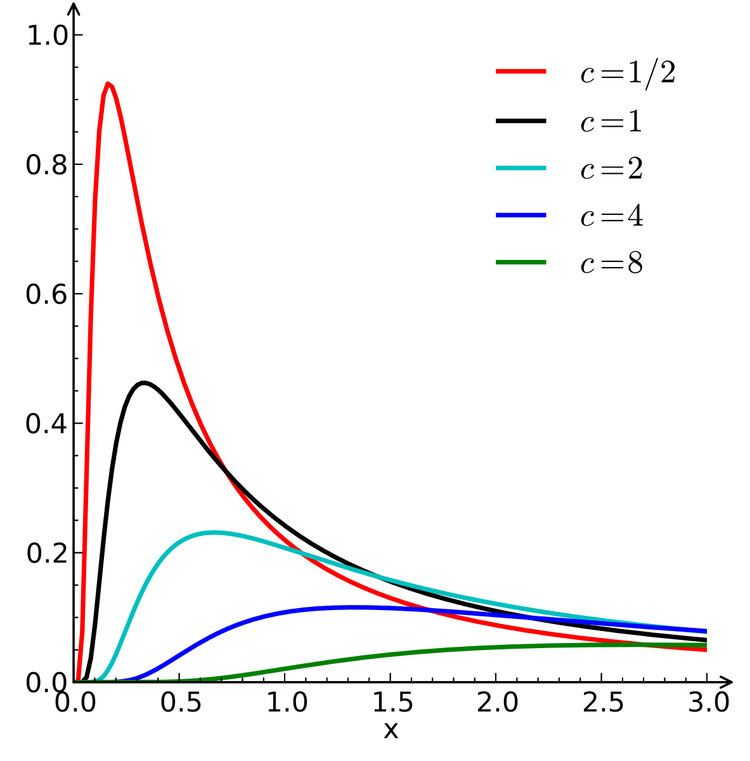 | ||
Support x ∈ [ μ , ∞ ) {\displaystyle x\in [\mu ,\infty )} PDF c 2 π e − c 2 ( x − μ ) ( x − μ ) 3 / 2 {\displaystyle {\sqrt {\frac {c}{2\pi }}}~~{\frac {e^{-{\frac {c}{2(x-\mu )}}}}{(x-\mu )^{3/2}}}} CDF erfc ( c 2 ( x − μ ) ) {\displaystyle {\textrm {erfc}}\left({\sqrt {\frac {c}{2(x-\mu )}}}\right)} Mean ∞ {\displaystyle \infty } Median c / 2 ( erfc − 1 ( 1 / 2 ) ) 2 {\displaystyle c/2({\textrm {erfc}}^{-1}(1/2))^{2}\,} , for μ = 0 {\displaystyle \mu =0} | ||
In probability theory and statistics, the Lévy distribution, named after Paul Lévy, is a continuous probability distribution for a non-negative random variable. In spectroscopy, this distribution, with frequency as the dependent variable, is known as a van der Waals profile. It is a special case of the inverse-gamma distribution.
Contents
It is one of the few distributions that are stable and that have probability density functions that can be expressed analytically, the others being the normal distribution and the Cauchy distribution.
Definition
The probability density function of the Lévy distribution over the domain
where
where
where y is defined as
The characteristic function of the Lévy distribution is given by
Note that the characteristic function can also be written in the same form used for the stable distribution with
Assuming
which diverges for all n > 0 so that the moments of the Lévy distribution do not exist. The moment generating function is then formally defined by:
which diverges for
This is illustrated in the diagram below, in which the probability density functions for various values of c and
Differential equation
Properties
The standard Lévy distribution satisfies the condition
where
Related distributions
Random sample generation
Random samples from the Lévy distribution can be generated using inverse transform sampling. Given a random variate U drawn from the uniform distribution on the unit interval (0, 1], the variate X given by
is Lévy-distributed with location
